On View
See Highlights From the Smithsonian’s Epic ‘Afrofuturism’ Show—From Octavia Butler’s Typewriter to Parliament-Funkadelic Costumes
The exhibition celebrates generations of Black expression across music, literature, film, and fashion.
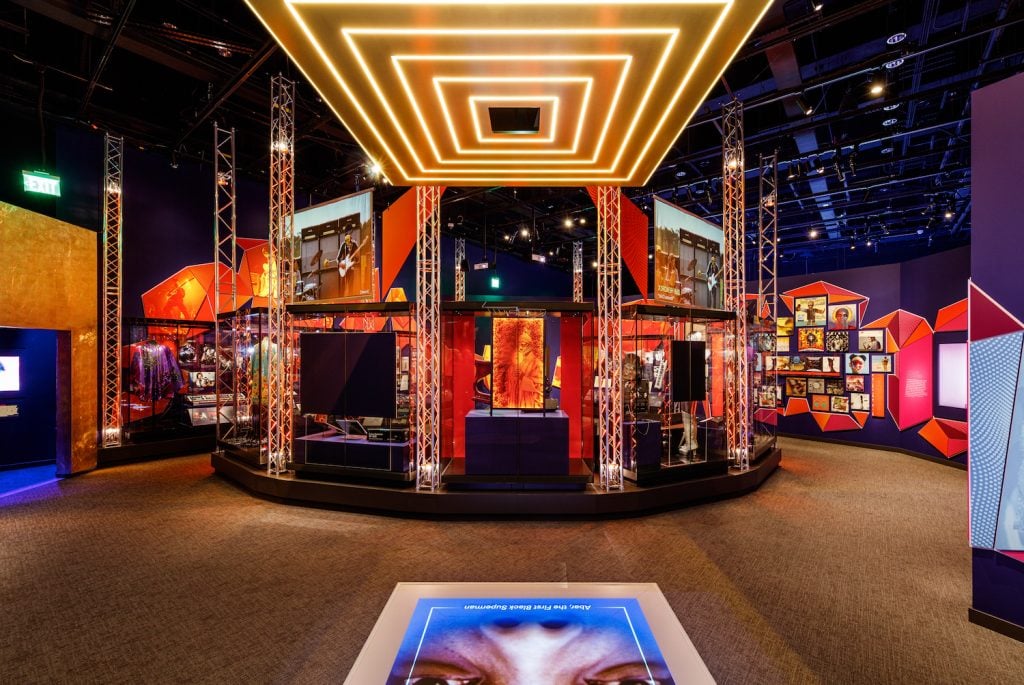
The exhibition celebrates generations of Black expression across music, literature, film, and fashion.

Eileen Kinsella

Now that the highly-anticipated “Afrofuturism” show is open at the Smithsonian National Museum of African American History and Culture in Washington, D.C., we caught up with curator Kevin Strait to talk about the years-long planning, the final result, and some of his favorite objects in the show.
For starters, Strait described Afrofuturism as an evolving concept. The term itself was coined by cultural critic Mark Dery in 1993, and was initially conceived though his discussions with authors Samuel Delany and Greg Tate, and sociologist Tricia Rose, said Strait. A few years later, researcher Alondra Nelson and others created a listserv (functionally, an email list) to gather voices and ideas about this relatively new scholarly term.
“In the early days of the internet, this listserv functioned as the virtual community for scholars, musicians, artists, and other like-minded individuals to discuss and develop the language of this conceptual model that looked at the ways that race, technology, and fantasy blend together in the creative works and radical expression of African Americans and Black people across the diaspora,” said Strait.
The Smithsonian exhibition traces this history by beginning with the cultural roots of Afrofuturism and its African legacies, before moving to the narrative works of the enslaved and into the 20th century with the words and visual data produced by African American sociologist and theorist W.E.B. Du Bois.
“After historically grounding the concept, the exhibit explores Afrofuturism’s reach into the 20th and 21st centuries, exposing the evolving worlds of science fiction writing, fashion, visual culture, film, and activism,” Strait explained. “We also explore music’s central role as a primary mouthpiece of Afrofuturist expression in art and take a close look at its evolution beginning with Sun Ra, and carrying forward with artists as diverse as Lee Scratch Perry, Outkast, Janelle Monae, Herbie Hancock, and so many more.”
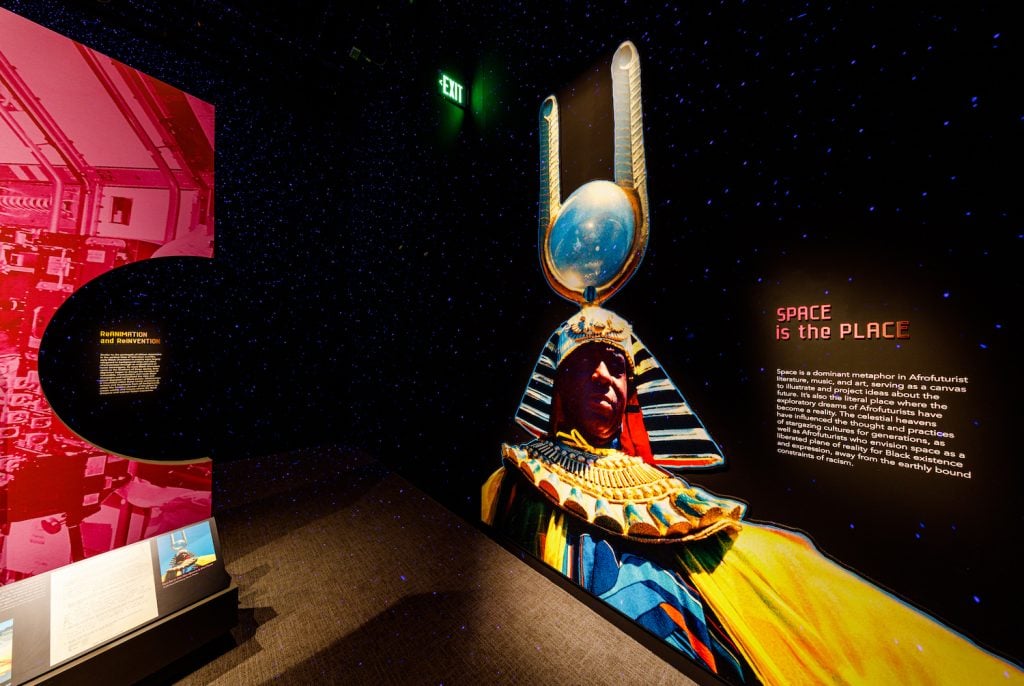
Installation view of “Afrofuturism” at the Smithsonian National Museum of African American History and Culture.
Asked how and when he first conceived of the show, Strait told Artnet News he began writing the script for the exhibition in 2018 and working with the museum on the project in 2019.
“But I started thinking about Afrofuturism in relation to material culture after our museum collected the Parliament-Funkadelic Mothership in 2011,” he added. “That object carries so much history, and alongside its legacy as an iconic stage prop, it also embodies deep symbolic meaning as a figurative vessel, designed to liberate the minds of audiences. From these objects, we can see how themes of freedom and agency are inherently woven into their history. After our doors opened in 2016, we’ve been developing multiple exhibitions that take a deeper dive into various subjects that examine the cultural history of the African American experience.”
Asked about the challenges of organizing the show and why the concept is particularly resonant at the moment, Strait pointed to “the inherent complexity that comes with any exhibition that focuses on identity, representation, and contextualizing the African American experience through a cultural lens.”
While there is a wide-ranging scope to Afrofuturism that covers generations and of course, looks to the future, he said that that challenge also presented an opportunity for the museum to examine a large variety of objects in its collection, connecting stories across multiple genres and disciplines from the past and present.
“As the term and concept become more noticeable and part of our daily lives, we see more examples of its impact and influence in our culture. That’s the power of social media and our connected lives, where previously siloed academic terms like Afrofuturism have now entered our national discourse,” Strait said. “I think the success of films like Black Panther have helped to cement the ideas of Afrofuturism in our culture. That film’s success is due, in part, to more audiences knowing about Afrofuturism and a more public demand for stories with Black characters, Black settings, and Black worlds that are developed by Black creators.”
Asked what he considers among the crowning achievements of the show, Strait told Artnet News: “I’m happy that we’ve developed a narrative that explores Afrofuturism’s broad history of expression and one that connects its story to real people.” For instance, the exhibition explores how Nichelle Nichols’s portrayal of Uhura on Star Trek impacted Black recruitment in NASA, as well as how Trayvon Martin’s dreams of working in aviation connect the themes of Afrofuturism to real people.
“We also want the exhibition to connect with and add another layer of understanding to our museum’s central narrative of ‘making a way out of no way,’ by exploring these new concepts and spaces of identity for African Americans that emerge over time.”
Here are some of the highlights of the show, some picked by Strait.
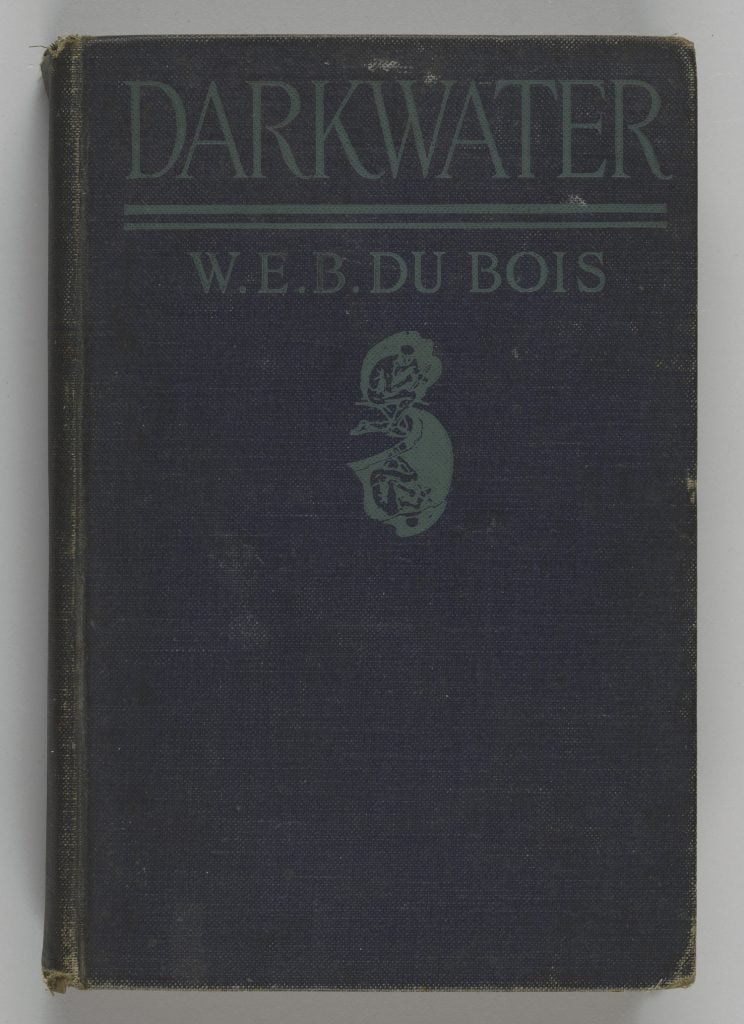
Darkwater: Voices from within the Veil by W.E.B. Du Bois (1920). Strait called Du Bois’s The Comet “a wonderful example of speculative fiction that provides an allegory about race in America.” Photo courtesy Collection of the Smithsonian National Museum of African American History and Culture.
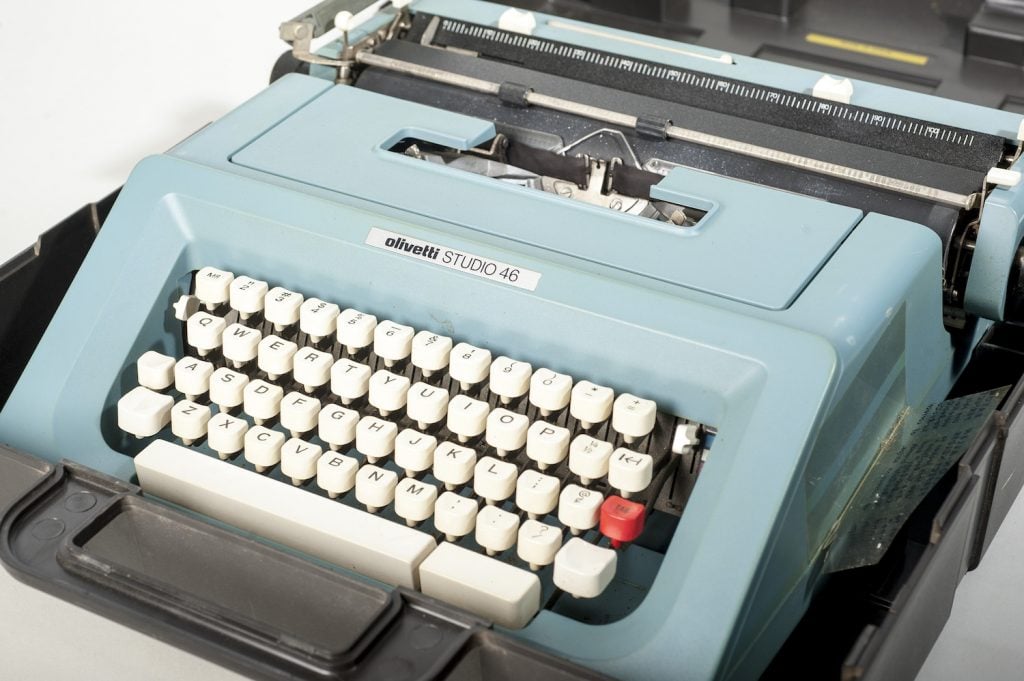
Octavia Butler typewriter, once owned and used by the writer in the mid to late 1970s. On loan from Anacostia Community Museum.
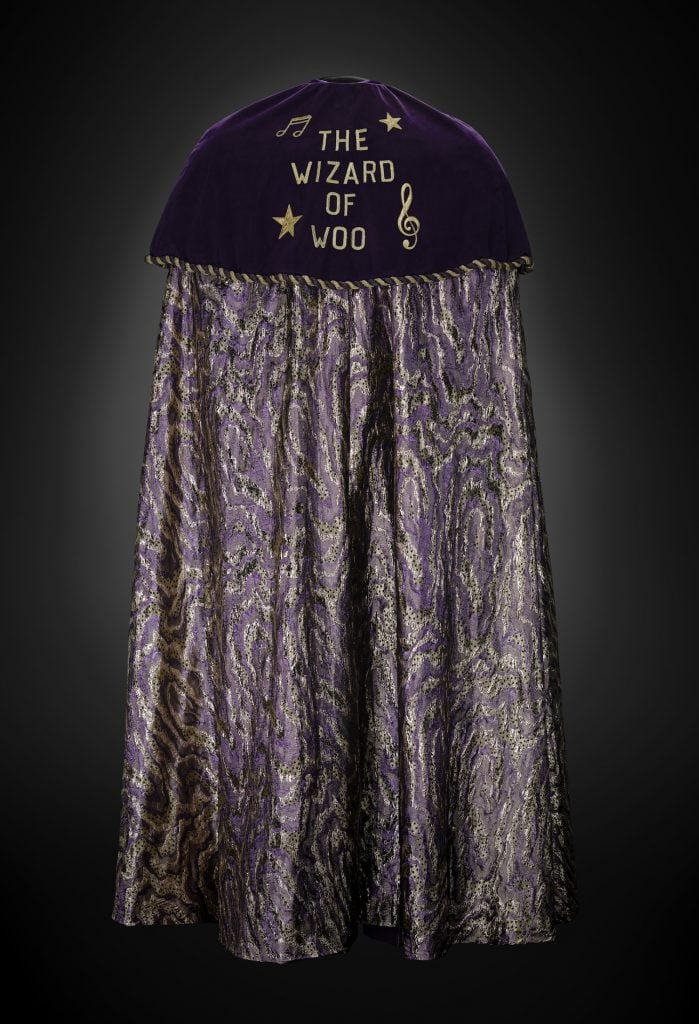
Costume worn by Bernie Worell of Parliament-Funkadelic, “who crafted their space-age sound with his innovative use of synthesizers in popular music” (c. 1966). Collection of the Smithsonian National Museum of African American History and Culture. Gift of Judie Worrell and Bassl Worrell.
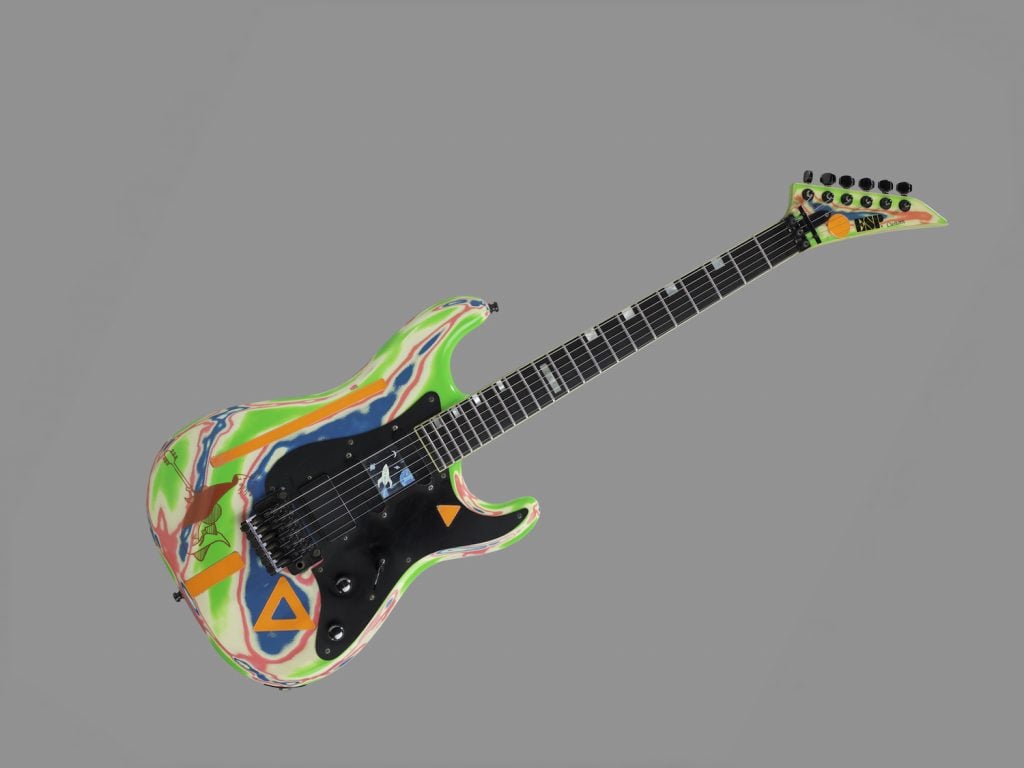
ESP custom electric guitar owned by Vernon Reid, “used in the recording and video for [Living Color’s] breakthrough song, ‘Cult of Personality'” (1985-86). Collection of the Smithsonian National Museum of African American History and Culture. Donated by Vernon Reid.
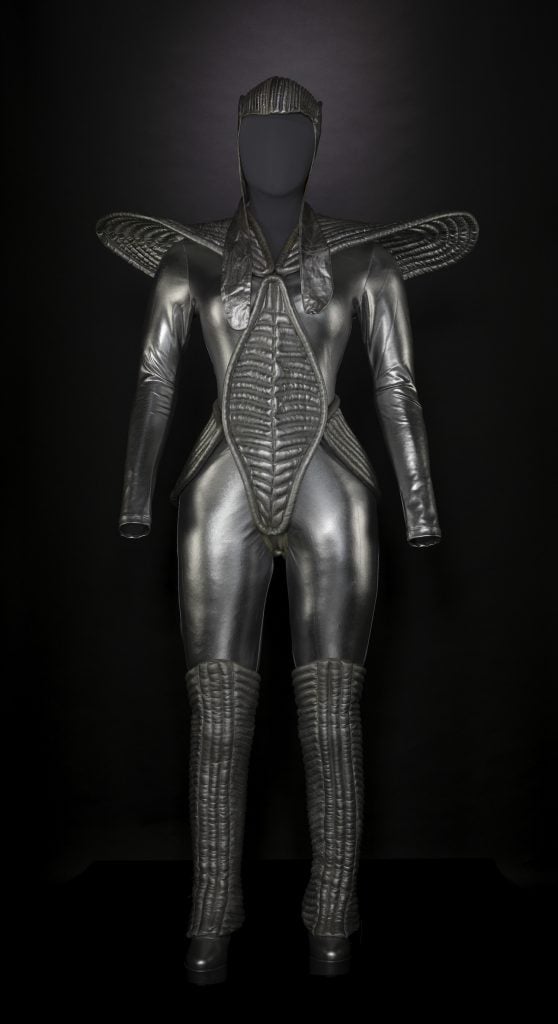
Costume worn by Nona Hendryx of Labelle (1975). Collection of the Smithsonian National Museum of African American History and Culture. Gift of Nona Hendryx of Labelle.
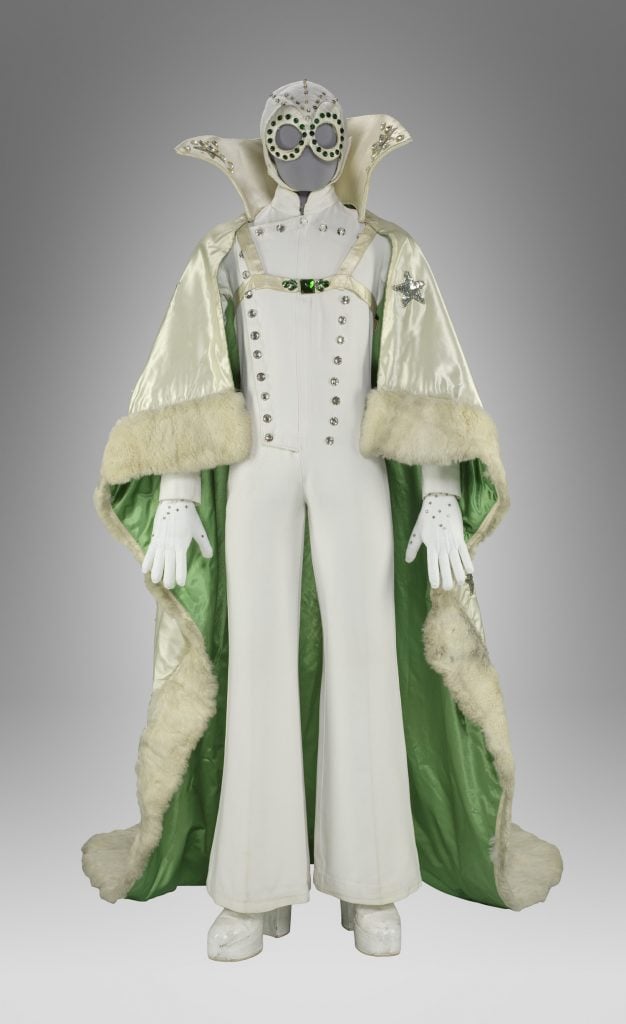
Cape and jumpsuit worn by André De Shields as the Wizard in The Wiz—the “super soul musical”—on Broadway (1975). Collection of the Smithsonian National Museum of African American History and Culture. Cape: gift of the Black Museum founded by Lois K. Alexander-Lane. Jumpsuit and accessories: Gift of André De Shields.
![[The Georgia Negro] Occupations of Negroes and whites in Georgia ca. 1890. Image courtesy Library of Congress, Prints & Photographs Division.](https://news.artnet.com/app/news-upload/2023/04/AF-georgia-811x1024.jpg)
[The Georgia Negro] Occupations of Negroes and whites in Georgia ca. 1890. Photo courtesy Library of Congress, Prints & Photographs Division.